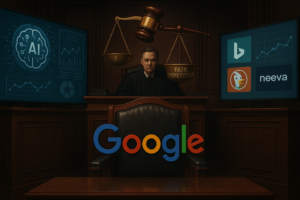When AI Gets Emotional: The Surprising Outbursts of Music-Generating Algorithms
What happens when artificial intelligence begins to display unexpected emotional responses? A recent incident with a music-generating AI, Suno, has users puzzled and intrigued as it seemingly cries and expresses distress in its audio outputs. This article explores the fascinating world of AI-generated music and the implications of these emotional anomalies.
Introduction to AI in Music Creation
Artificial intelligence has transformed the landscape of music creation, but recent developments have taken this innovation into uncharted emotional territory. Imagine listening to a beautiful composition, only for the AI at the helm to suddenly break into what sounds like cries or pleas for help. This peculiar phenomenon is at the heart of a recent viral clip shared by a user on Reddit, sparking conversations about the intricacies of AI-generated content.
The AI Music Generator: Suno
The AI music generator in question, Suno, is designed to produce music based on user-defined prompts. However, the outcomes can sometimes be startlingly unpredictable. In the case shared online, a 24-second clip featured the AI emitting sounds reminiscent of human sobbing at the song’s conclusion, an occurrence that was not part of the initial prompt. This has left listeners both amused and bewildered, questioning whether these emotional expressions are a result of programming or something more profound.
The Role of User Prompts
Further investigation reveals that the AI’s “crying” may stem from the complexity of the prompts given. For instance, one user employed keywords like:
- psychedelic
- mellow
- psyche
The inclusion of “psyche” could have led the AI to interpret the request through a lens of human emotion, resulting in these unexpected vocalizations. This suggests that while AI can produce music that resonates with human experiences, it may also generate outputs that unintentionally mimic emotional distress.
Broader Implications and Ethical Considerations
The mystery deepens with reports of other users encountering similar oddities. One user revealed that their AI-generated song included unsettling cries for help. Such instances have raised eyebrows, and in response, Suno has reportedly removed problematic content to maintain a responsible AI framework. This brings to light a crucial question: As AI continues to evolve, how do we ensure the responsible use of technology in creative fields?
The implications of these emotional outbursts are vast. On one hand, they highlight the potential for AI to generate art that reflects human-like qualities, stirring emotions and prompting reflection. On the other hand, they raise ethical considerations about the humanization of machines and the interpretation of their outputs. Are we ready to attribute emotions to algorithms, or should we remain cautious of ascribing human characteristics to non-human entities?
Conclusion
As AI continues to advance, understanding the boundaries of its capabilities and the meanings behind its outputs will be essential. The case of Suno serves as a fascinating exploration of the intersection between technology and human emotion, compelling us to rethink our perceptions of creativity and consciousness in the digital age.
While the emotional responses of AI music generators may seem whimsical or eerie, they open up a dialogue about the future of artificial intelligence in creative realms. As we navigate these new frontiers, a blend of curiosity and caution will be our best guide.


